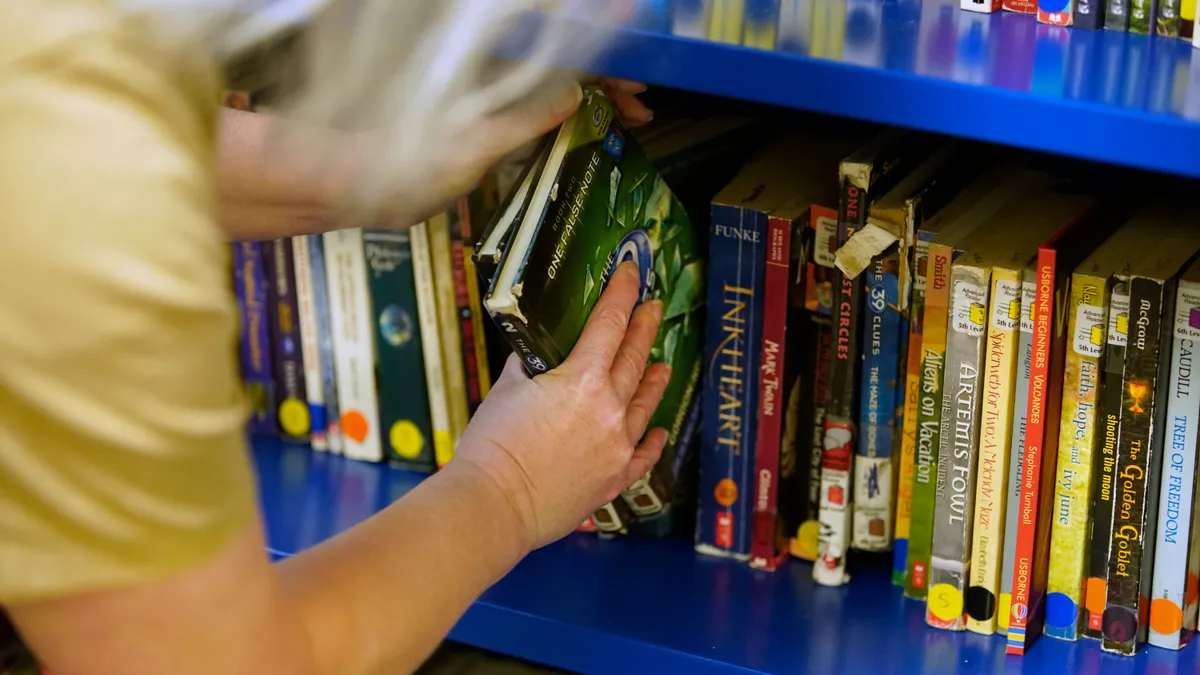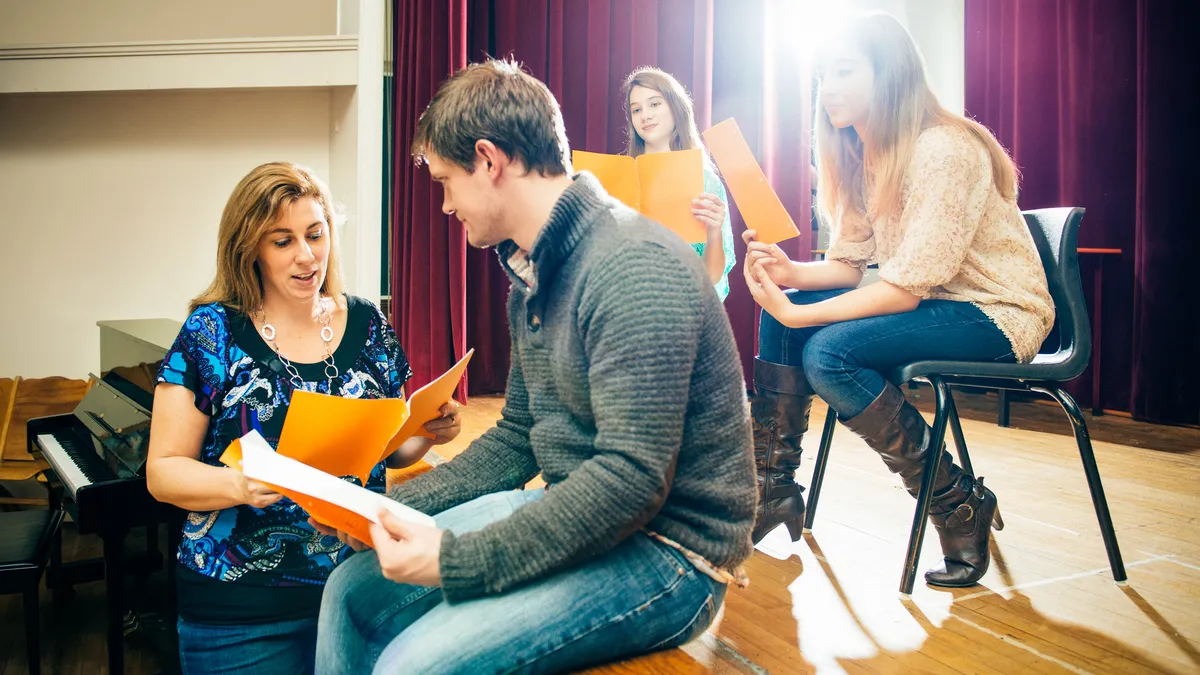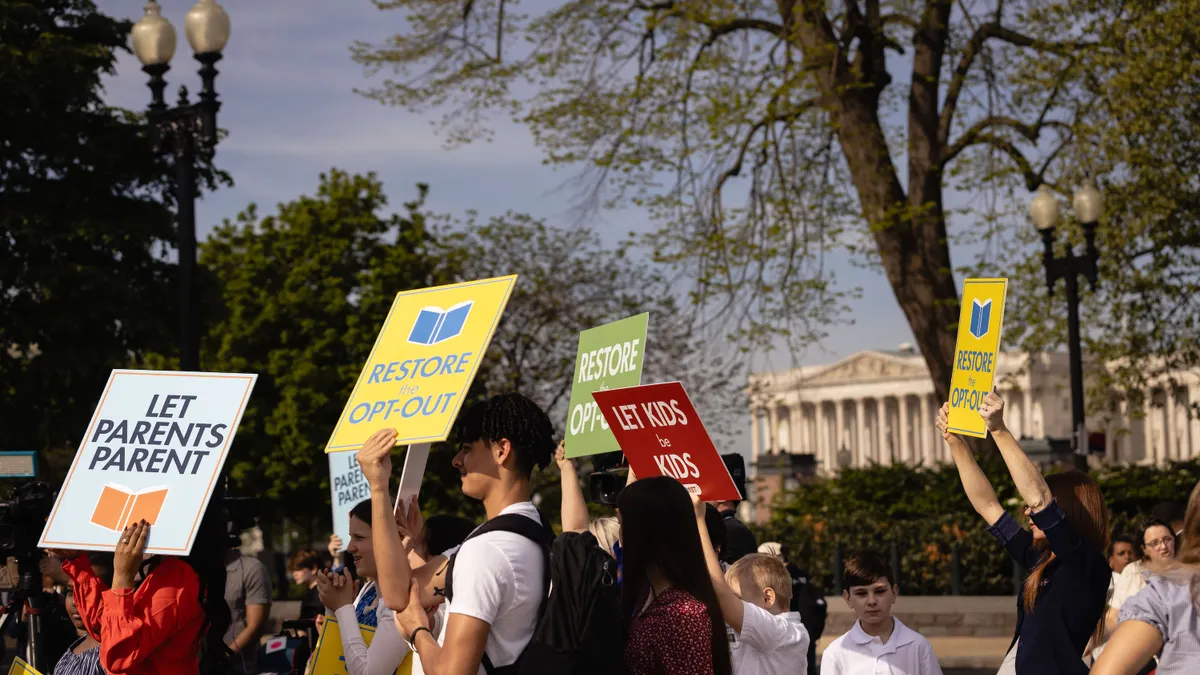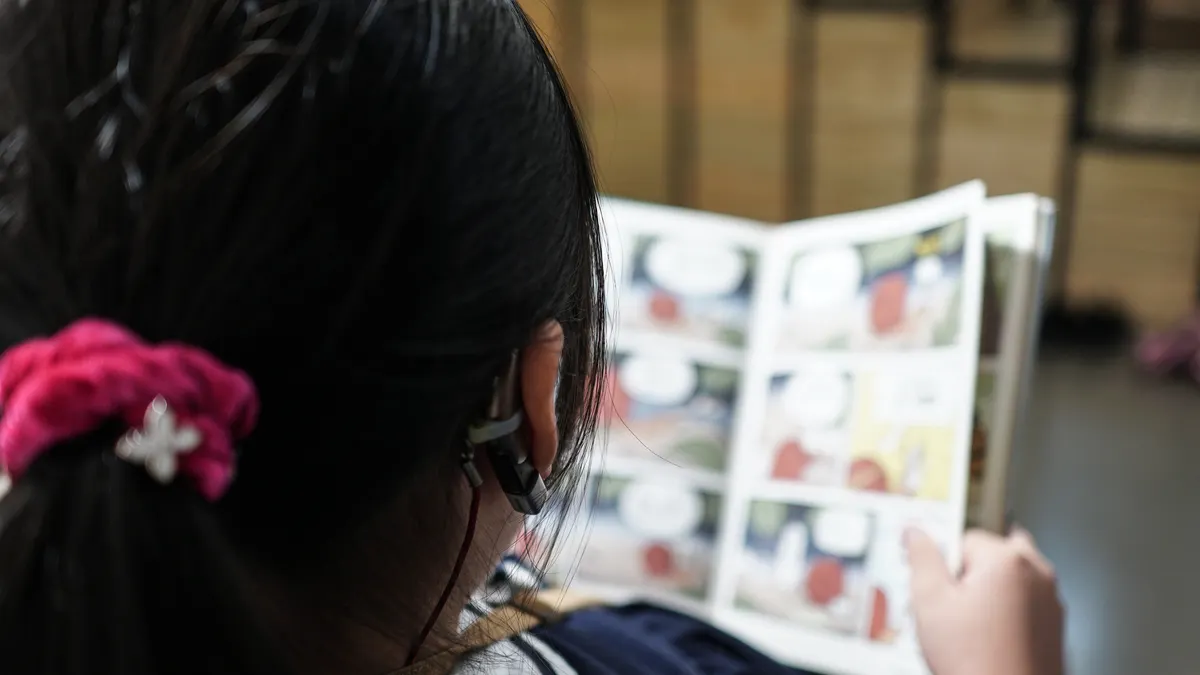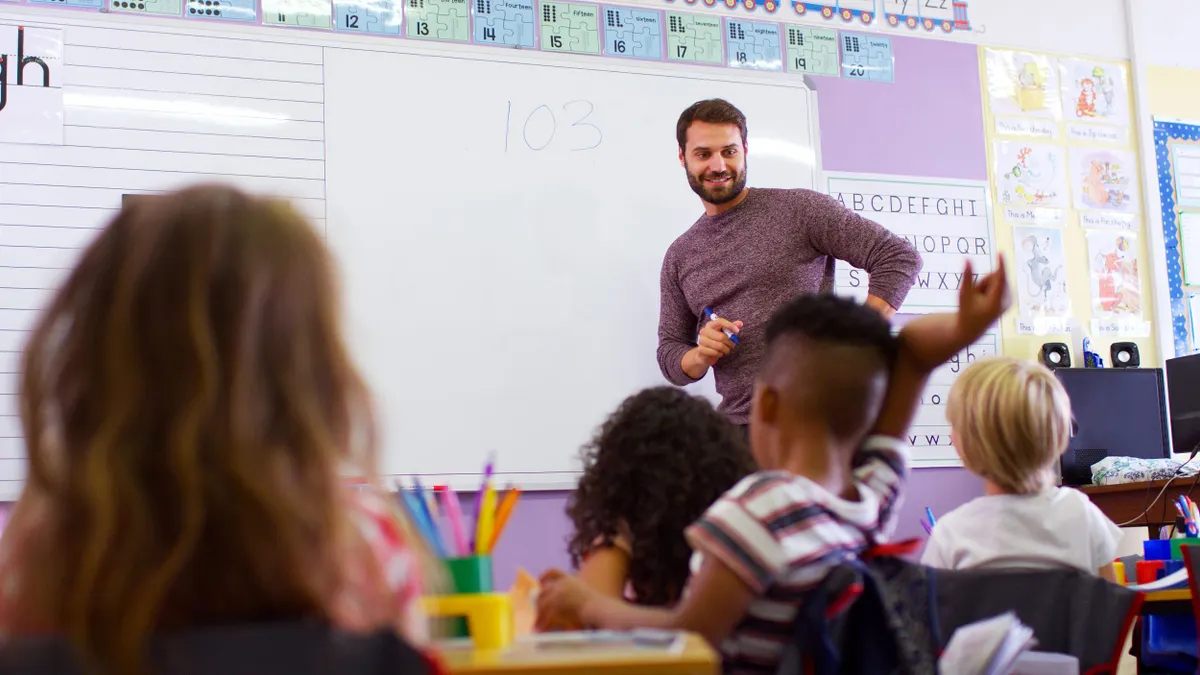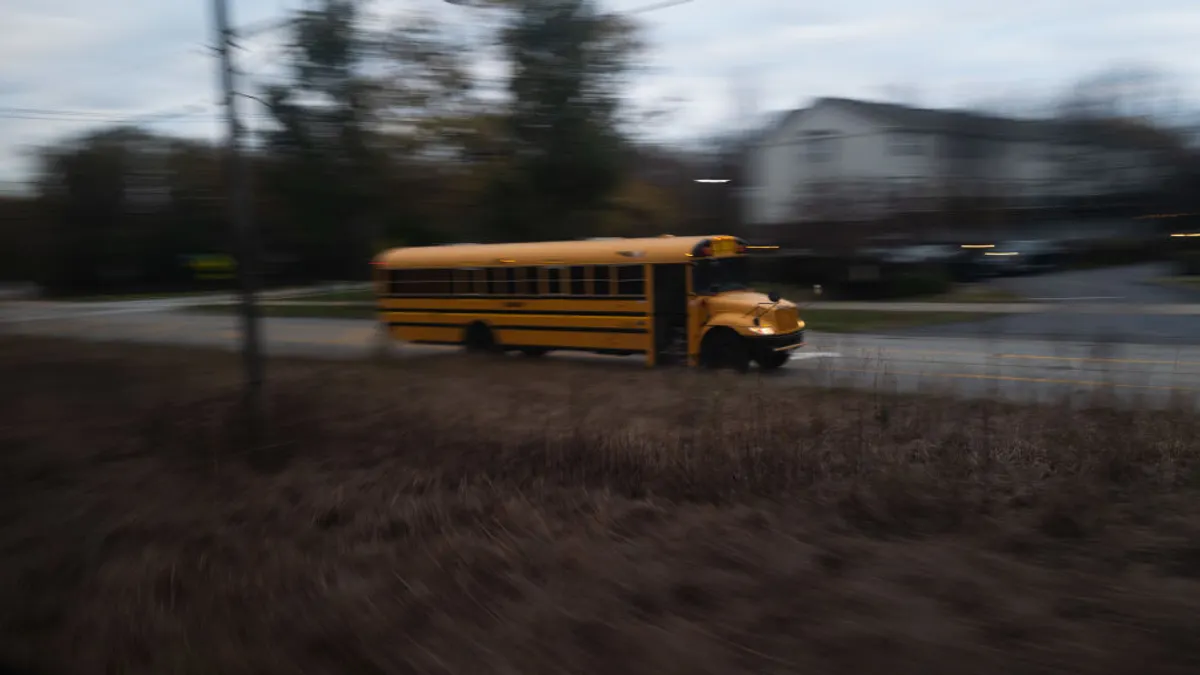Book challenges concern National Writing Project Executive Director Elyse Eidman-Aadahl. But teachers who avoid selecting titles for fear they’ll be challenged? That worries her more.
“It is the chilling effect that is more concerning than the actual bans,” said Eidman-Aadahl. “A fair amount of what is happening now is that legislation is poorly written with vagueness. And teachers are not sure how far they should anticipate an action. And that is where the self-censorship comes from.”
While schools and libraries may expect occasional book challenges, the numbers are trending higher. The American Library Association’s Office for Intellectual Freedom recorded 1,597 individual book challenges to schools, libraries, and universities in 2021. That’s the highest amount noted since the ALA started tracking these challenges 30 years ago.
School districts have processes for challenges to books in classrooms and school libraries, which often include asking committees to read the titles before making any decision. But Eidman-Aadahl hears of people trying to work around those channels, who walk onto school grounds, into classrooms, and then examine classroom libraries — even if they don’t have students in the schools, she said.
These challenges appear to affect textbooks as well, said Kenneth Kunz, vice president of the International Literacy Association. Kunz said he heard from someone in publishing at an ILA event in April who mentioned the possible need to print different versions of books to comply with regions and their different rules.
“One attendee, who works for a publishing company, had even been talking about how publishers want to ensure books are diverse and inclusive,” he said. “But they said they may need to develop multiple versions of curricula resources for certain states that can’t adopt them for certain reasons.”
With the current environment potentially shaping choices teachers are making in the classroom, experts offer some suggestions on how educators can find the support they need as they develop curricula for the coming school year.
Build a teacher community and develop a course of action
Eidman-Aadahl believes one of the best resources teachers have is each other. She noted that teaching can feel isolating, leading educators to avoid titles to preempt their worry about being targeted and handling that challenge on their own.
“I think self-censorship comes from feeling alone,” she said. “We may not hear from colleagues about what they’re doing.”
She suggests educators collaborate on decisions by working together at a school, across a district — or even reaching out through online resources. During these in-person or virtual get-togethers, educators can discuss why they chose a particular set of books or titles to teach in their curriculum.
They should then put that argument down in writing, said Eidman-Aadahl. That practice alone prepares educators if they face a challenge, while also helping them feel empowered about their professional abilities and knowledge.
“Writing that thing is not easy for a lot of teachers,” she said. “But they can talk through with colleagues about why they selected those books, and how would they express that decision to the public. They can workshop with each other so if someone comes, the explanation is right there.”
Open a dialogue
Aside from ILA and its webinars, Kunz likes to point educators to the ALA's resource on how to handle book challenges. He has heard from ILA members who experience challenges, especially around inclusive books.
Challenges can sometimes be halted by having conversations with parents and others, Kunz said, adding that some concerns may be rooted in confusion about why a book was selected and the details of lessons anchored to that choice.
“A lot of times, challenges are about a lack of understanding or miscommunication,” he said. He has heard about local communities that initially say they don’t want a book in schools before working with teachers and having concerns dispelled.
Jennisen Lucas, district librarian for Park County School District 6 in Cody, Wyoming, likes to encourage teachers to turn to their school librarians for support, particularly if parents or other community members challenge materials.
“School librarians are a resource,” says Lucas, president of the American Association of School Librarians for the 2021-22 year. “We can talk about the books, we’ve read a lot of reviews, and we can be a part of that process so teachers don’t feel left out on their own. We’re all part of a community.”
Take the book off-campus
Lucas said in the last 10 years, her district’s school board has only pulled one book, overruling a decision by the district committee to keep it on library shelves. But she knows local groups in her area are using a list of flagged titles, “…working through them in a strategic way to see which ones will get pulled,” she said.
While some school boards say challenges have to start with parents, others, like in Lucas’ district, allow community members without children in the school system to launch a challenge.
Educators who want to help students gain access to challenged or banned books face challenges themselves. For example, educators can encourage students to look for challenged books at the public library, but can’t officially add them to the curriculum because of a potential lack of access.
Further, buying copies of a banned book and giving them to students could be construed as insubordination. However, a book club — held off school grounds — could be an option that allows students to read and discuss a title.
“A teacher could buy copies and offer to lead a book group at a public library for anyone who shows up,” Lucas said. “And it’s completely outside of school.”
These suggestions all point to issues educators may be considering as they spend the summer redesigning and rethinking lesson plans for the coming year.
Eidman-Aadahl notes educators want to choose material that helps their students feel supported while encouraging critical thinking in the classroom. The ability to assign books to students helps them fill that mission — deepening student-learning while widening the way they see the world, as books are designed to do.
“Many people think books are chosen to send a message to young people and they don’t like the message it’s sending,” said Eidman-Aadahl. “But it’s not a message-sending thing, it’s an inquiry-opening thing. It’s not about telling a child what’s right or wrong. It’s about helping young people understand themselves and strengthen their viewpoints.”


